Get your brakes, steering and suspension tested once a year
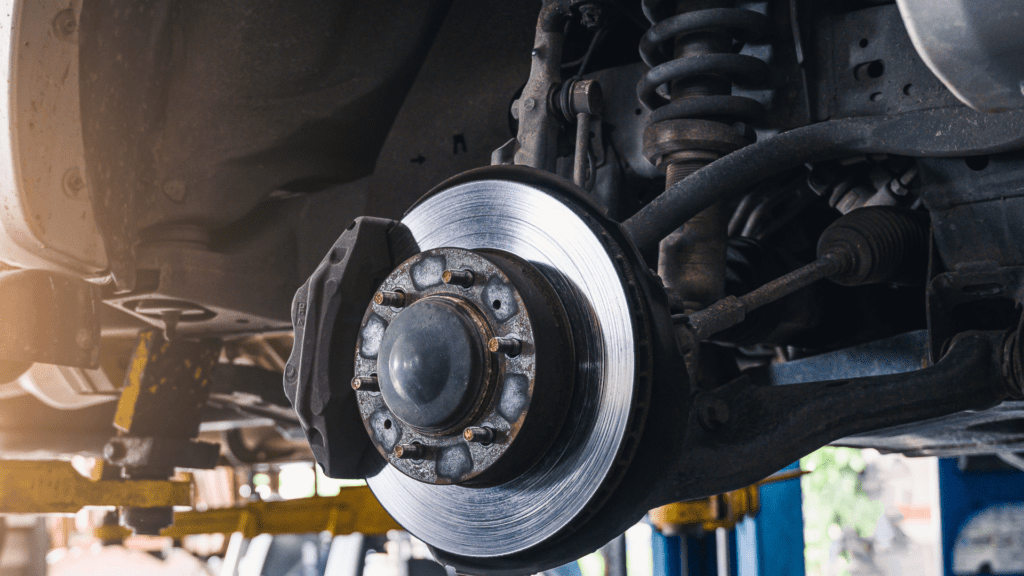
It’s amazing what we can become accustomed to when we regularly drive our vehicles. We become overly forgiving of how the car handles and any noises it makes, which is a bad habit to get into. You may not realise that certain parts have slowly degraded, which could be very dangerous.
If anything on the underside of your car causes you concern, it’s a good idea to get it checked asap. Otherwise I think we should all have our brakes, steering, and suspension checked once a year, or at the very least every 18 months. Taking your vehicle to a specialised shop for this testing is, in my opinion, the best option. It’s what they do for a living, and the costs are lower than you might expect, and the peace of mind that comes from knowing your car is safe to drive is invaluable.
How can I tell if my suspension is ok?
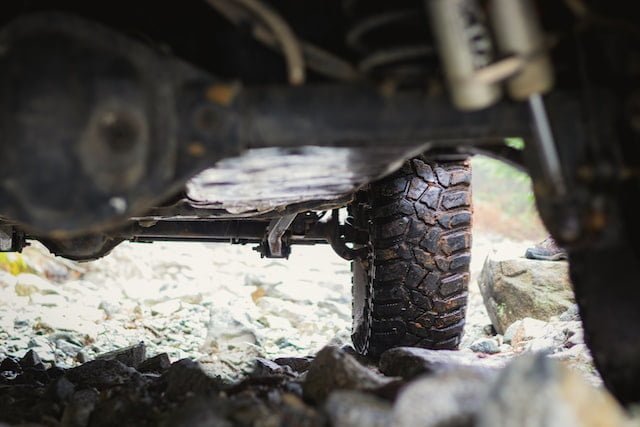
If you notice unsteadiness above 80km/hr, leaning or tilting to one side in turns, nose-diving while braking, excessive bouncing over bumps, swaying, unusual tyre wear, or fluid leaks from the outside of your shock absorbers or struts, your shocks and struts may be worn out.
A car sagging to one side could likely have a problem with the shocks, springs, or struts.
Your car’s rear suspension may be worn if you hear rattling coming from the back of the vehicle.
With a failing suspension system, you’ll often feel the vehicle “drift” or “pull” when you’re turning. This basically means the shocks are no longer keeping the vehicle body stable against the centrifugal force of a turn, increasing your risk of a rollover.
You can test the struts in your car by pressing firmly on each side of the car, releasing the pressure, and then watching the car bounce back on itself. If the vehicle bounces a lot, the front and rear struts and shocks should be replaced. Some mechanics may have a Monroe shock absorber tester, which is a cordless, handheld device that only takes a few minutes to complete.
Companies like Pedders have a drive-on vehicle diagnosis and reporting system installed in their workshops’ driveways, which offers a prompt and transparent routine undercar comprehensive evaluation on the state of your vehicle’s shocks and suspension.
Front wheel drive vehicles – CV Joints
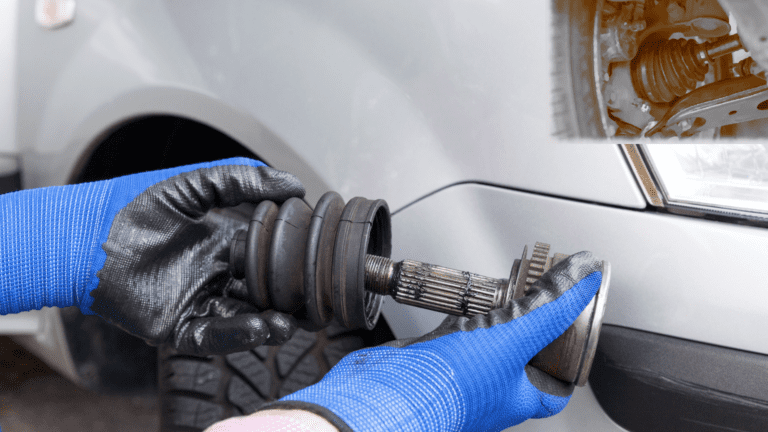
Constant Velocity (CV) joints are essentially a drive-shaft that runs from the front differential to each wheel. If you drive a front-wheel-drive car and notice/experience:
1. A tear in one of your CV joint boots.
2. Grease on the inside of your wheels.
3. Knocking noises from the front.
4. Vibration while driving.
5. Constant rumbling from one of your wheels.
6. A clicking sound if when turning in a circle.
Then there is a reasonable chance that one of your CV joints has failed or just about to fail.
Symptoms of Tyre and Wheel Alignment problems

If your steering wheel shakes, your tyres may be out of balance or out of alignment, which could cause shakes throughout your car, including the steering wheel.
Improper wheel alignment may be causing your tyres to wear unevenly and excessively
Incorrect wheel alignment may be the cause of your steering wheel appearing to be out of centre. Even though your wheels seem straight, you will notice that your steering wheel is out of centre, you might notice that the logo on the steering wheel is not straight. Pulling to one side is yet another obvious indication that your car wheels are out of alignment.
If your ride is rough, bumpy, or harsh, it may be due to incorrect tyre pressures or poor wheel alignment (the angles of your wheels must be adjusted back to the manufacturer’s specifications).
Are my Tie Rods still ok?
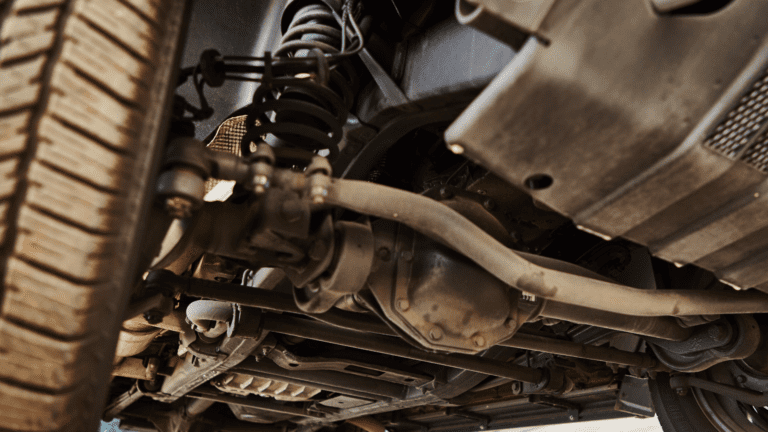
From what I’ve noticed over many years, excessive wear from harsh driving conditions or drivers damaging cars is one of the leading causes of tie rod failure. Drivers may not always be aware of how much damage they are causing to their vehicles under specific situations, and as a result, they are not compelled to have their vehicle evaluated after encountering extreme conditions.
Potholes that have grown too large are a common source of severe trouble, as are persons driving over tough terrain and not adapting to the conditions. Other causes of failure include a lack of grease or lubrication, unfortunate manufacturing flaws, and corrosion.
To avoid these failures, make sure the tie rod joints are greased at every service interval, and avoid driving over rough terrain or hitting curbs unless your vehicle is designed or modified for driving in rough conditions. Inspect the tie rods for cracks, breaks, looseness, or damage once a year.
Replace the tie rods if they show symptoms of wear or failure to keep your car working when you need it.
When should I be worried about my brakes?

When you experience a shudder coming through from the brake pedal, it could be due to uneven wear of brake discs, if your brake discs are unevenly worn the brake pads come in contact with the flat spots on the rotor’s surface which causes the vibration that is called brake shudder. Brake shudder can also be caused by damaged rotors, malfunctioning calipers, or new brake pads that have not been properly broken in after replacement.
If your braking performance has deteriorated and it is now taking longer to stop your vehicle, it is very likely that your brake pads have worn.
If your car pulls to one side when you apply the brakes, there might be an issue with the braking system. One brake may grab harder than the other due to a stuck calliper or a problem with the wheel cylinder, causing the car to veer to one side.
If your brake pedal feels unusually hard, it could be due to a faulty brake booster, booster hose, or check valve.
What are some other reasons for testing the underside of your car?
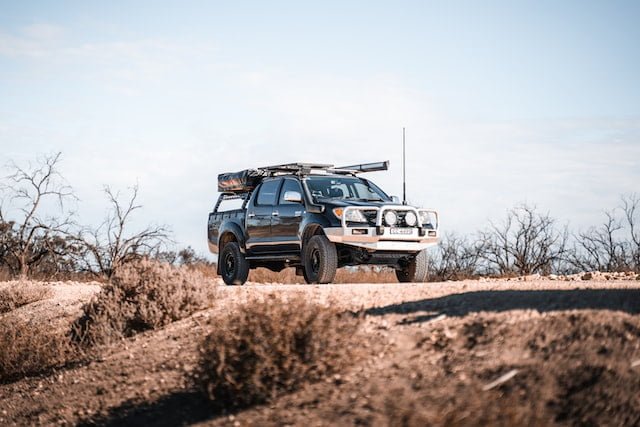
Other reasons to have your car’s undercarriage inspected and tested once a year include if planning to tow a caravan across the country, you’re going on a long road trip, or if your vehicle frequently carries heavy loads.
All of these
scenarios will put additional strain on your undercarriage components, and it’s
far better to replace these parts in advance rather than waiting until
something fails.







Thanks for another great post.
Thanks Ben
For those with 4×4 utes, I’ve recently published an article with general servicing information for a number of different types of machinery, including a 4×4 ute, which may come in handy? If Interested, here is the link, https://www.cmmssuccess.com/generic-equipment-servicing-information/
[…] https://www.glzwoodw.com/your-brakes-steering-suspension/ […]
[…] industry for over 70 years and offers a variety of products and services such as suspension, brakes, steering, shock absorbers, and towing […]
[…] Tumblr Slideshare Reddit Linkedin Instagram Link Post navigation ← Previous […]